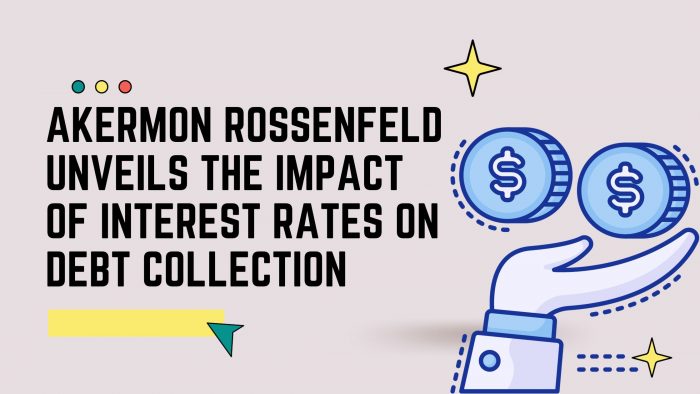Akermon Rossenfeld Unveils the Impact of Interest Rates on Debt Collection
In the intricate world of debt collection, one element plays a pivotal role in shaping the landscape: interest rates. As financial tides ebb and flow, Akermon Rossenfeld, a leading debt collection agency, sheds light on the profound impact interest rates have on the debt collection process. In this blog post, we’ll delve into the intricacies of interest rates and their ripple effects, exploring how they influence both creditors and debtors alike.
Understanding Interest Rates
Interest rates are the linchpin of the financial system, dictating the cost of borrowing and the return on investment. Akermon Rossenfeld emphasizes the importance of comprehending how interest rates function, particularly in the context of debt collection. When debtors default on payments, interest rates can transform a manageable debt into an overwhelming financial burden, complicating the debt recovery process.
The Double-Edged Sword for Debtors
For debtors, the fluctuation of interest rates can be a double-edged sword. In times of economic stability and low-interest environments, debtors may find relief in reduced interest burdens, making debt repayment more manageable. However, during periods of economic uncertainty or rising interest rates, debtors face heightened challenges.
Akermon Rossenfeld underscores the domino effect of interest rate hikes on debtors. As interest rates rise, the cost of servicing debt increases, potentially pushing individuals further into financial distress. This, in turn, can lead to an uptick in delinquencies and defaults, creating a more complex scenario for debt collectors tasked with recovering the outstanding amounts.
Implications for Creditors
On the flip side, creditors also feel the reverberations of interest rate fluctuations. When interest rates are low, creditors may witness an increase in borrowing and spending, potentially boosting the economy. However, in the realm of debt collection, lower interest rates could mean that the overall return on debt portfolios diminishes, posing a challenge for creditors seeking to recover the maximum amount owed.
Conversely, higher interest rates may result in a decrease in consumer spending and borrowing, but they can also translate to higher returns for creditors collecting on overdue accounts. Akermon Rossenfeld points out that creditors must carefully navigate this dynamic landscape, adapting their strategies based on prevailing interest rate conditions.
Strategies for Debt Collection Agencies
Akermon Rossenfeld elucidates the importance of agility in debt collection strategies. Recognizing that interest rates are not static, debt collection agencies must be proactive in adjusting their approaches. During periods of economic stability, focusing on negotiation and personalized repayment plans may yield better results. Conversely, in times of economic downturn or rising interest rates, debt collection agencies may need to adopt a more empathetic approach, understanding the financial hardships faced by debtors.
In Conclusion
The impact of interest rates on debt collection is a nuanced interplay of economic forces that necessitates a comprehensive understanding from both debtors and creditors. Akermon Rossenfeld, with its industry expertise, underscores the need for flexibility in navigating the ever-changing financial landscape. As interest rates continue to shape the dynamics of debt collection, staying informed and adaptive remains paramount for all stakeholders involved. In the intricate dance between debtors, creditors, and collection agencies, awareness of the influence of interest rates is key to orchestrating a harmonious and equitable resolution to the complex symphony of debt.























